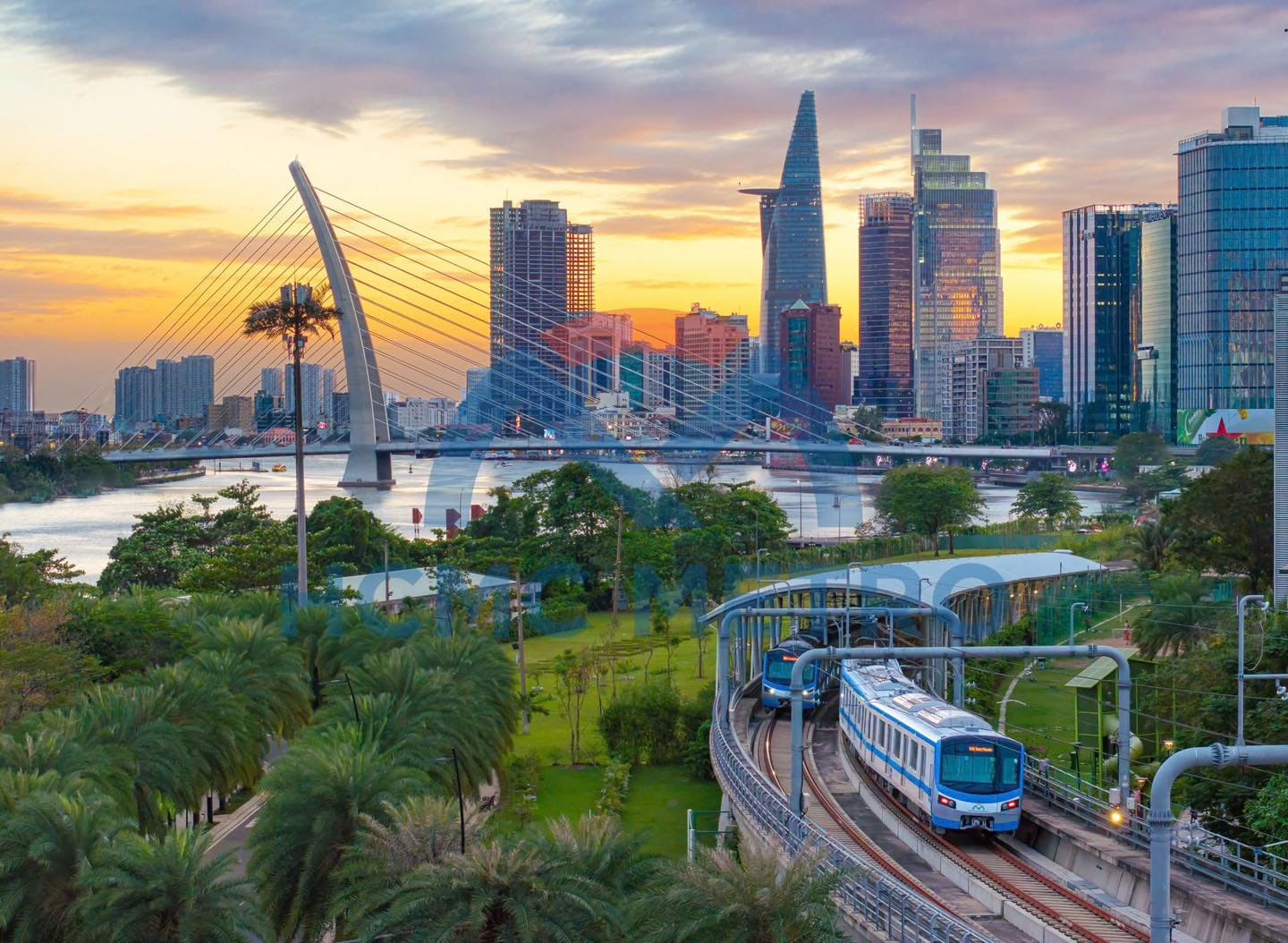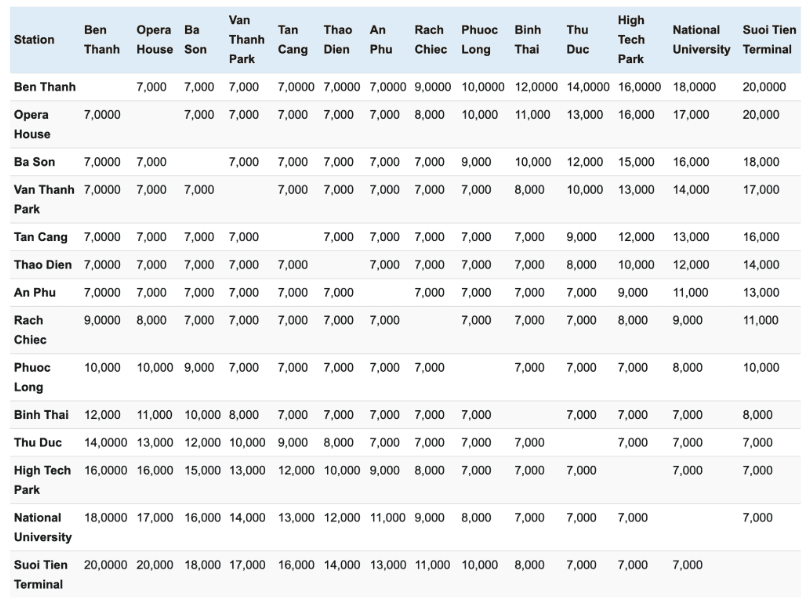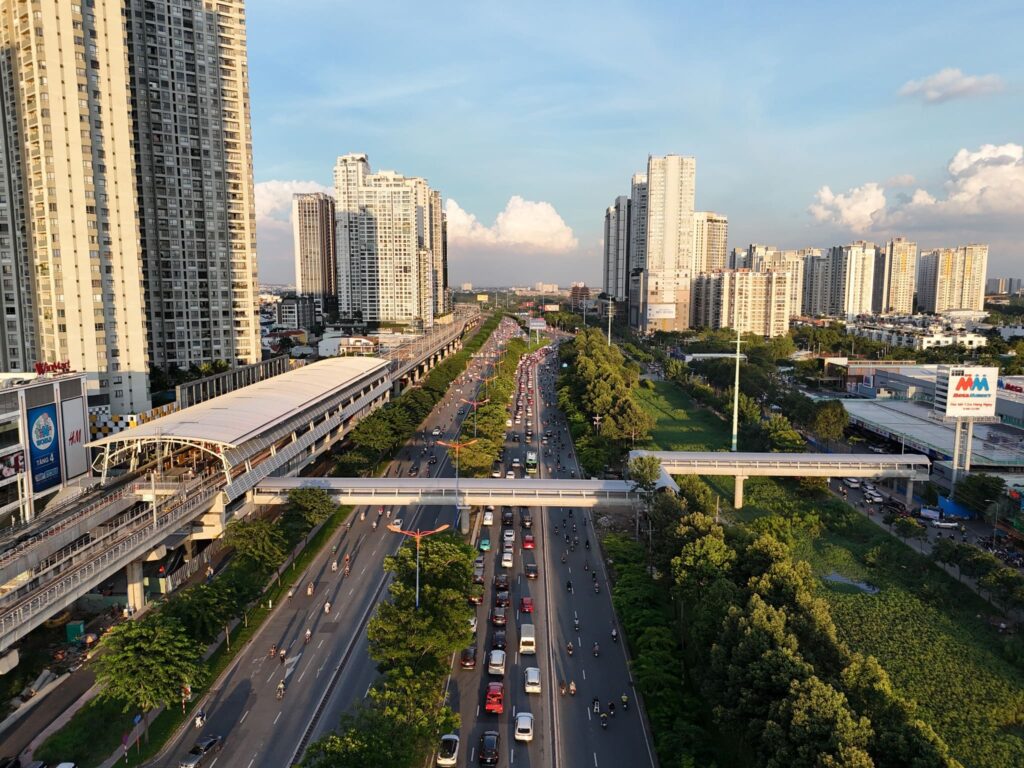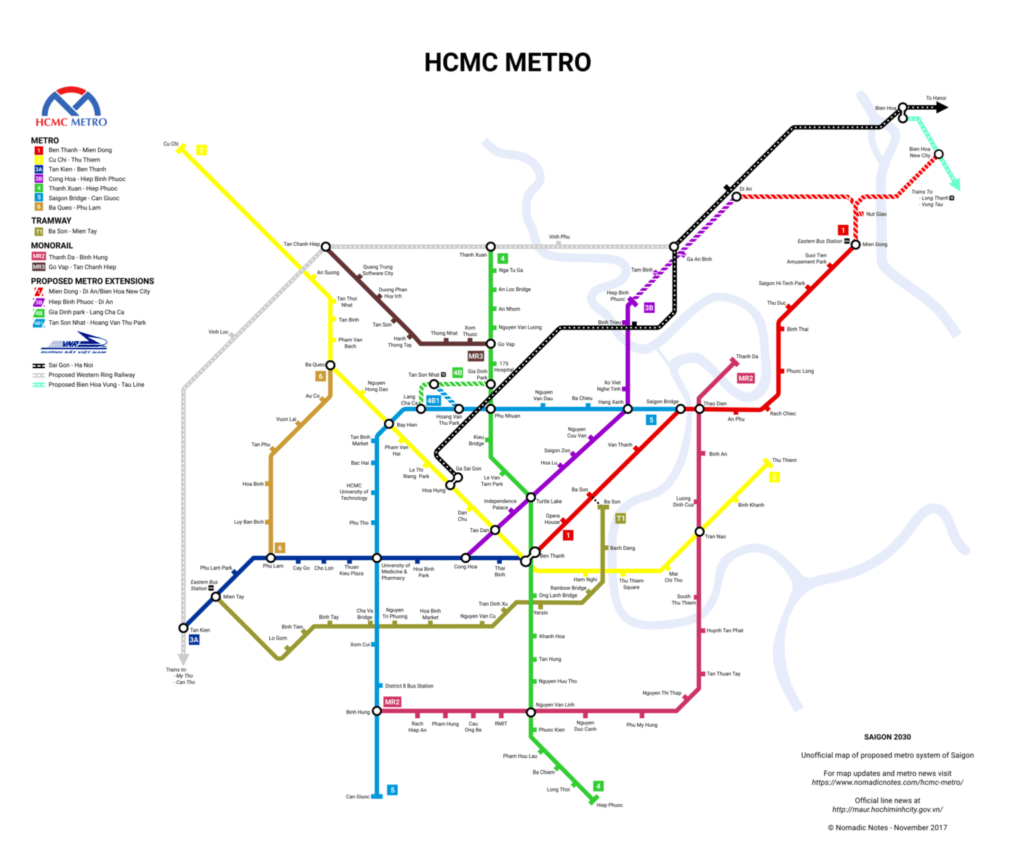Ho Chi Minh City Metro: Complete Guide from How to Ride to Must-Visit Spots

On December 22, 2024, the long-awaited Ho Chi Minh City Metro Line 1 officially opened. This marks a revolutionary step in Vietnam’s transportation system, aiming to alleviate traffic congestion and improve the environment as part of the city’s urban planning efforts.
In this article, we provide a comprehensive guide on Ho Chi Minh Metro Line 1, including its overview, how to use it, recommended spots near major stations, the impact of its opening, and future plans.
目次
1. Overview of Ho Chi Minh Metro Line 1
Ho Chi Minh City’s Metro Line 1 runs from Ben Thanh Station to Suoi Tien Station, covering a total distance of 19.7 km with 14 stations. The section from Ben Thanh Station to Ba Son Station is underground, while the remaining part runs on an elevated track. This design makes it convenient for both tourists and residents.
The metro is operated with support from Japan’s Japan International Cooperation Agency (JICA), and the train cars are designed and manufactured by Hitachi Ltd.
The metro operates from 5:00 AM to 10:00 PM, with trains running approximately every 10 to 15 minutes.
2. How to Ride the Metro & Ticketing System
Using the Ho Chi Minh Metro is similar to subway systems in many other countries. Tickets can be purchased at station kiosks or ticket vending machines, and passengers tap their IC card or paper ticket on the gate to enter.
Fare System:
The metro fare is distance-based, with a minimum fare of 7,000 VND (approximately 0.28 USD) and a maximum fare of 20,000 VND (approximately 0.80 USD).
*Exchange rate based on May 2024: 1 VND ≈ 0.00004 USD

Additionally, the following ticket options are available:
- 1-Day Pass: 40,000 VND (approximately 1.60 USD)
- 3-Day Pass: 90,000 VND (approximately 3.60 USD)
- Monthly Pass (General Public): 300,000 VND (approximately 12 USD)
- Monthly Pass (Students): 150,000 VND (approximately 6 USD)
3. Must-Visit Spots Near Metro Stations
Ben Thanh Station (Bến Thành)
Located at the heart of Ho Chi Minh City, this station is next to Ben Thanh Market, one of the city’s biggest and most popular markets. Visitors can enjoy local delicacies, shop for souvenirs, and explore the night market.
Nha Hat Thanh Pho Station (Nhà Hát Thành Phố)
This station is close to Saigon Opera House, Nguyen Hue Walking Street, Ho Chi Minh City Hall, and Notre-Dame Cathedral. Dong Khoi Street nearby is a hotspot for luxury hotels, stylish cafes, restaurants, and shopping.
Tan Cang Station (Tân Cảng)
This station provides easy access to Landmark 81, the tallest building in Vietnam. The skyscraper features an observation deck with breathtaking views, a shopping mall, restaurants, and entertainment facilities.
Thao Dien Station (Thảo Điền)

Thao Dien is a trendy district popular among expats. This area offers a variety of cafés, boutique shops, international restaurants, and lifestyle stores, making it a unique blend of local and global culture.
Suoi Tien Station (Bến Xe Suối Tiên)
The final stop on Metro Line 1, this station is near Suoi Tien Theme Park, a Buddhist-inspired amusement park featuring roller coasters, water parks, and unusual sculptures. The New Eastern Bus Terminal is also located nearby.
4. The Impact of the Metro’s Opening
The Ho Chi Minh Metro is expected to significantly impact the city’s transportation and urban development.
- Reduction in Traffic Congestion: Major roads in Ho Chi Minh City are expected to see a decrease in traffic.
- Environmental Benefits: The shift from motorbikes and cars to metro transit will contribute to reducing air pollution.
- Economic Growth: The metro will drive real estate development along its route, increase business opportunities, and boost the city’s economic expansion.
The success of the metro depends on how quickly locals and visitors adopt it as a primary mode of transportation.
5. Future Plans and Expansion
Ho Chi Minh City plans to expand the metro network to a total of eight lines. Currently, Line 2, which will connect Ben Thanh Station to Tan Son Nhat International Airport, is under construction and is expected to be completed by 2032.

Additionally, plans for Lines 3 through 8 are in progress. Once completed, these lines will significantly enhance the city’s public transportation system, making travel more convenient for tourists and business travelers alike.
Conclusion
The opening of Ho Chi Minh Metro Line 1 marks a major transformation in the city’s public transport system. With improved connectivity and environmental benefits, the metro is set to revolutionize urban travel in Ho Chi Minh City.
Whether you’re visiting or living in Ho Chi Minh City, be sure to experience the metro for a comfortable and efficient way to navigate the city.
(Photo by Facebook「HCMC METRO」)


